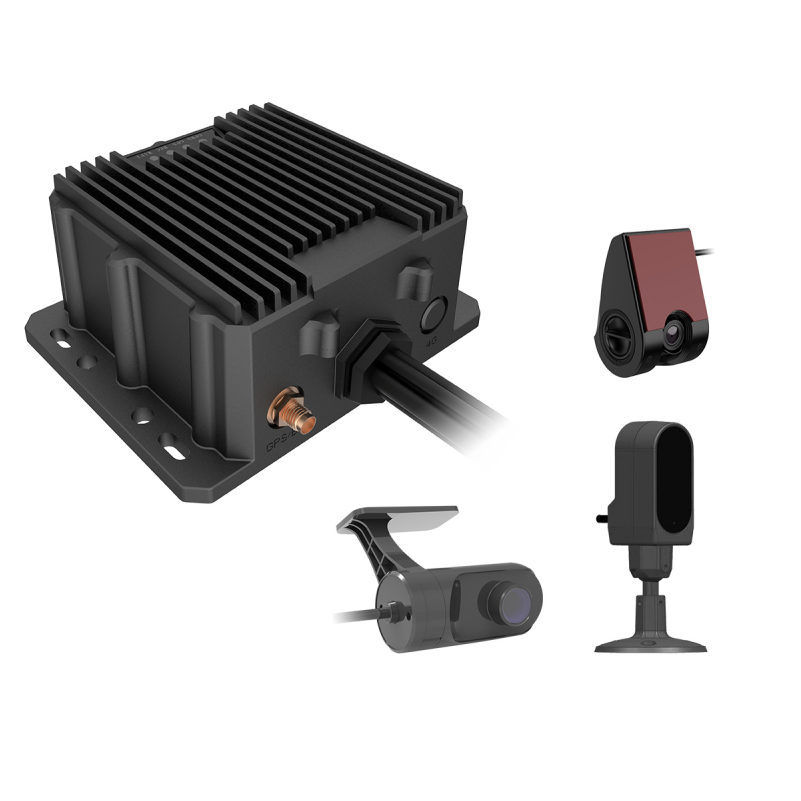In the dynamic world of fleet management and transportation, video telematics has emerged as a crucial technology, seamlessly integrating video capture with telematics data to provide comprehensive insights into vehicle operations, driver behavior, and road conditions. Understanding how video telematics works involves exploring its components, data collection processes, real-time analysis, and practical applications. This essay delves into the intricate workings of video telematics and its transformative impact on the industry.
Data Collection and Transmission
The process of data collection and transmission in video telematics involves several steps:
- Data Capture: Cameras continuously record video footage, while sensors monitor for specific events. Telematics devices collect data on vehicle performance and location in real time.
- Event Triggering: When a significant event occurs, such as a sudden stop or collision, the sensors trigger the cameras to save the relevant footage. This ensures that critical moments are captured for later analysis.
- Data Transmission: The captured video footage and telemetric data are transmitted to the data management platform via cellular networks or Wi-Fi. This allows for real-time monitoring and analysis.
- Data Storage and Processing: The transmitted data is stored in the cloud, where it can be accessed and analyzed by fleet managers. Advanced algorithms process the data to generate insights and alerts.

Real-Time Analysis and Insights
The real-time analysis of video and telemetric data is a core aspect of how video telematics works:
- Driver Behavior Monitoring: The system analyzes driver behavior by examining factors such as speed, braking patterns, and adherence to traffic rules. Unsafe behaviors like speeding, harsh braking, and distracted driving can be identified and addressed promptly.
- Incident Analysis: In the event of an accident or near-miss, video footage provides a clear visual account of what transpired. This helps in accurately reconstructing events, determining fault, and mitigating liability.
- Predictive Maintenance: By continuously monitoring vehicle performance data, the system can predict maintenance needs and alert fleet managers to potential issues before they become critical. This proactive approach helps reduce downtime and repair costs.
- Route Optimization: Telematics data on vehicle location and performance allows fleet managers to optimize routes for efficiency and fuel savings. Real-time traffic data can be integrated to avoid congestion and delays.
Practical Applications of Video Telematics
Video telematics finds applications across various industries, each benefiting from its unique capabilities:
- Logistics and Delivery: Companies in the logistics sector use video telematics to monitor delivery routes, ensure timely deliveries, and enhance driver safety. Real-time tracking helps in managing large fleets and improving customer satisfaction.
- Public Transit: Transit authorities utilize video telematics to enhance passenger safety, monitor driver behavior, and improve service reliability. It helps in maintaining schedules and responding quickly to incidents.
- Emergency Services: Ambulance, fire, and police departments rely on video telematics to ensure swift and safe responses. Video footage aids in documenting incidents and improving training for emergency responders.
- Construction and Heavy Equipment: Video telematics is used to monitor the operation of construction vehicles and heavy machinery. It helps in ensuring safety on job sites, preventing equipment misuse, and reducing maintenance costs.

Real-World Applications
Video telematics is widely used across various industries, including logistics, transportation, public transit, and emergency services. For example:
- Logistics and Delivery: Companies use video telematics to monitor delivery routes, ensure timely deliveries, and reduce fuel costs.
- Public Transit: Transit authorities utilize video telematics to enhance passenger safety, monitor driver performance, and improve service reliability.
- Emergency Services: Ambulance and fire departments rely on video telematics to ensure safe and efficient response times while documenting critical incidents.
The Future of Video Telematics
As technology advances, the capabilities of video telematics continue to expand. Artificial intelligence (AI) and machine learning are being integrated into these systems to provide more advanced analytics and predictive insights. For instance, AI algorithms can analyze video footage to detect potential hazards, such as pedestrians or cyclists, and alert drivers in real-time.
Moreover, the development of 5G networks will enable faster data transmission, allowing for real-time video streaming and more responsive telematics applications. This will enhance the ability of fleet managers to make informed decisions quickly and effectively.
At HBOIOT, we offer a wide range of video telematics systems and have a listen first approach that enables us to ensure the solutions we build meet your requirements. Switch to video telematics today with HBOIOT and turn your data into decisions.
